Last month we published a post called Treating Pain in Senior Cats but didn’t touch on some of the similar challenges faced by arthritic, injured or disabled cats. One of which is the simple act of using their litter box which can often be very difficult depending on the individual cat’s level of mobility.
We came across an ingenious solution called The Kitty Box Ramp which was specifically designed to help disabled, injured and arthritic cats to enter and exit their litter boxes comfortably. It’s the only veterinarian approved litter box ramp for this purpose, and is such a clever idea that we simply had to share it.

The Kitty Box Ramp is designed for virtually any height or size litter box and its ramp adjusts to 3 different heights to suit your situation. Designed to hold up to 20 lbs it has stay-put tongues which anchor the ramp to your litter box for a solid and sturdy hold. There are removable tread pads made with an easy-grip surface that make walking up and down the ramp a breeze.
And did we mention that The Kitty Box Ramp is Made in the USA with 100% recycled and recyclable material. How’s that for a green eco footprint! ![]() The instructional video below shows how simple it is to assemble.
The instructional video below shows how simple it is to assemble.
Designed by a husband and wife team, it was inspired by their own cat (Sam) who in her later years developed progressive arthritis which made it more and more difficult for her to get in and out of the litter box. They kept buying shorter and shorter boxes for her, but stepping up and into or out of the litter box was very painful for her. They say necessity is the mother of invention.
After a few prototypes later, and plenty of trial and error experimentation they designed and developed the Kitty Box Ramp. And it’s available in three different colors.

We spoke with Jennifer (one of the creators) and asked here a few questions:
Q: When was the Kitty Box Ramp first launched?
We created our Kitty Box Ramp about two years ago (2016). But it wasn’t until about a year ago that we started building our team to really help launch our company. Thanks to our website designer, Deborah of EZ Advertizing who not only has such an amazing talent but has an incredible amount of patience. And is so much fun to brainstorm with! A very skillful and imaginative graphic designer. And an incredible PR person – Marla White of White Handed. She has gone above and beyond with getting our product out there in the pet industry.
Q: Cats with what physical conditions are best suited for using a Kitty Box Ramp?
We designed our Ramp to be able to accommodate cats with practically any disability in mind. We first had the idea of creating a ramp designed to help arthritic cats because of our cat Sam, ( who was the inspiration for coming up with this idea). But after a few different prototypes, we soon realized this could also be so helpful for injured to severely disabled cats as well. We’ve had pet parents purchase our Ramps to help their “tri-pod” cats, to cats that are paralyzed, blind cats, CH (cerebellar hypoplasia) cats and even cats who have a temporary injury. In fact, we needed to use one of our Ramps for one of our other kitties named Kirby while she was healing from a torn ligament in her back leg. It makes us feel so good inside knowing we created a product that can truly help physically challenged cats. Also, want to mention our Ramp is great for kittens and litter box trained rabbits.

Q: Can you share how many cats now have their own Kitty Box Ramp?
With us being a start-up company and launching our product, we are thrilled that the number of Ramps pet parents order from us is growing at a nice steady pace. At this point, from households, rescues and sanctuaries there are a few hundred physically challenged kitties that we are sure are happy to be able to use their litter box again.
Q: What’s the key message you’d like to share about Kitty Box Ramp?
When we came up with this idea to help other cats like Sam, we never knew how much this would make an impact on helping such physically challenged cats. Believe us, there we’re many moments (before our KBR Team came to fruition), we literally thought and asked ourselves was this such a smart idea to do? Can or will this ever succeed? We faced quite a few challenges along the way. But, when we started seeing and hearing from pet parents on how much this has helped their cats, (cats like Watson of Handi-Cat for instance) we knew we created something wonderful. To see the challenges and struggles these cats go through on a daily basis….we realized these special kitties have taught us that they don’t give up and neither shall we. Here at Kitty Box Ramp, we honor that.
[click_to_tweet tweet=”The Kitty Box Ramp is designed to help disabled and arthritic cats enter and exit their litter boxes comfortably” quote=”The Kitty Box Ramp is designed to help disabled and arthritic cats enter and exit their litter boxes comfortably”]
And speaking of Watson … we decided to share his story too! Watson (photo below) was born with radial hypoplasia, a congenital disease that caused the malformation of his forelimbs. This has resulted in both front legs being twisted inwards. He has limited use of his front legs because the joint has to bear any weight and force that would otherwise normally be placed on his paws. Oh, and did we mention he’s uber adorable too! >^..^<

Here’s what Watson’s owner Melanie shared with us:
Q: How old is Watson?
Watson will be 4 at the end of summer 2018. I adopted him in October 2014.
Q: Describe his purrsonality?
Watson is playful, lovable, and smart. He loves to cuddle with me and with our other cat and dog, especially while lying in the sun in front of our big window. He’s also very vocal so anytime he wants something, he will cry until he gets it. Before we moved into a house without stairs, this vocalness really helped if he managed to escape the blockades I had in place to block the stairs. Watson can get up stairs in about three hops, but once he’s up, he’s stuck. If this would happen, he would cry until I came to carry him back down. I’ve learned that if he’s crying, he either needs help, or he really wants something, whether it be dinner, a bug on the wall, or a window blind opened so he can bask in the sun all afternoon.
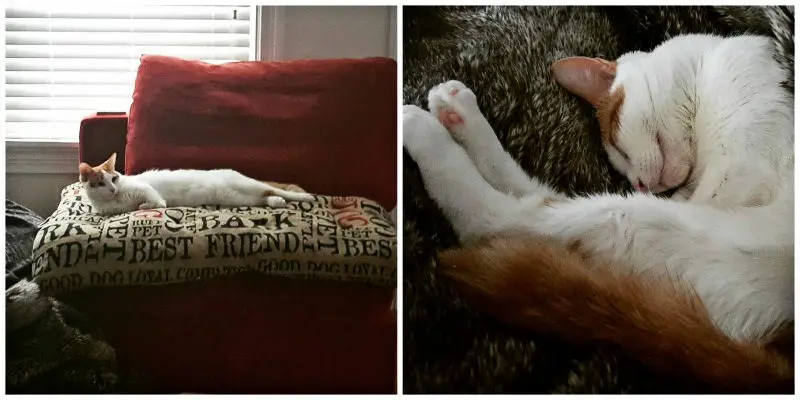
Q: Does his ‘ability’ slow him down in any way?
Watson would say no, but there are some parts of his life that are affected. Anything that involves jumping down from something can result in him landing on his front legs. Since they are bent inwards, this forces him to land on the joint in his front legs, which can be awkward and painful. Watson’s hind legs are extremely strong since he uses them more than a normal cat. This allows him to jump really high, whether it be on counters or up stairs.
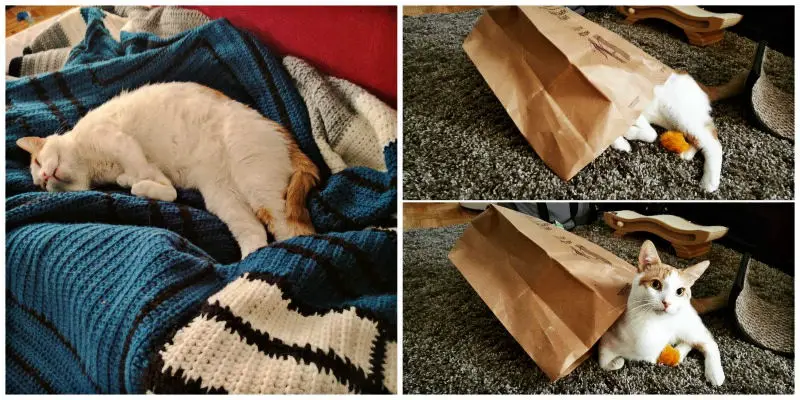
Q: What’s the funniest thing Watson has ever done?
Watson is quite a character so we get lots of laughs from him. One of my favorite things he does is cuddling with our dog Circuit. When we brought Watson home, he immediately bonded with Circuit. They play together all the time. After all the playing, Watson enjoys some good cuddles with Circuit, but Circuit doesn’t always know what to do. She’ll get up and move, and Watson will get up, follow her, and lay right back down on top of her. This will continue until Circuit finally gives in. Check out Watson in his video podcast below:
Q: What’s the naughtiest thing he’s ever done?
One of Watson’s most amazing qualities is his ability to adapt. To get around, he uses his hind legs more than normal kitties. To play, he using his mouth to carry toys, catch toys, etc. We feed our older cat Peach with a puzzle feeder bowl to help maintain her weight. When Watson decided he wanted the food in the puzzle feeder, which requires a cat to use their front paws to dig out the kibble, he implemented his ability to carry things to lift the bowl up, after I had just filled it up, and throw it off the counter. There were kibbles everywhere! Watson was quite proud of himself, and the dog was happy to help clean up too.
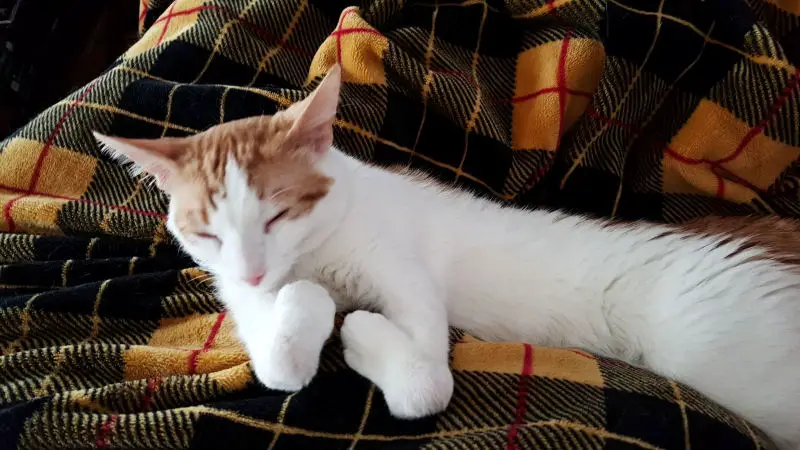
Q: How has Kitty Box Ramp changed his life?
I had adapted most of Watson’s environment to help him get around, but I hadn’t come up with a solution for getting in and out of the litter box. Before Kitty Box Ramp, Watson would have to jump in and out, which meant landing on his front legs. Kitty Box Ramp allows him to take smaller, more graduated steps that don’t put pressure on his front legs.

Q: If Watson could talk what would he say to all our cat loving readers?
Every animal deserves a chance and should never be discarded for coming with extra challenges. There might not be an answer for every problem, but with enough research and creativity, many of the challenges can either be solved or improved enough to give an animal a happy, healthy, and comfortable life.
Q: When/how did you get Watson to begin using his Kitty Ramp Box?
Watson was curious about his Kitty Box Ramp as soon as I started putting it together. Since he loves treats, it was pretty easy to get him on the ramp. I put a treat every few inches, and he just followed the trail of treats. After that, he was using it like it had always been there. We also practiced going up and down with a toy that he loves chasing so I would recommend that for anyone with a kitty that isn’t as motivated by food.

Summary
A very special thanks to Jennifer and Melanie for sharing their inspurrational stories with us. Please spread the word if you know a disabled, injured or even a senior cat who might need help getting into and out of their litter box. For more information visit kittyboxramp.com. And be sure to check in on Watson at his IG feed @handi.cat.

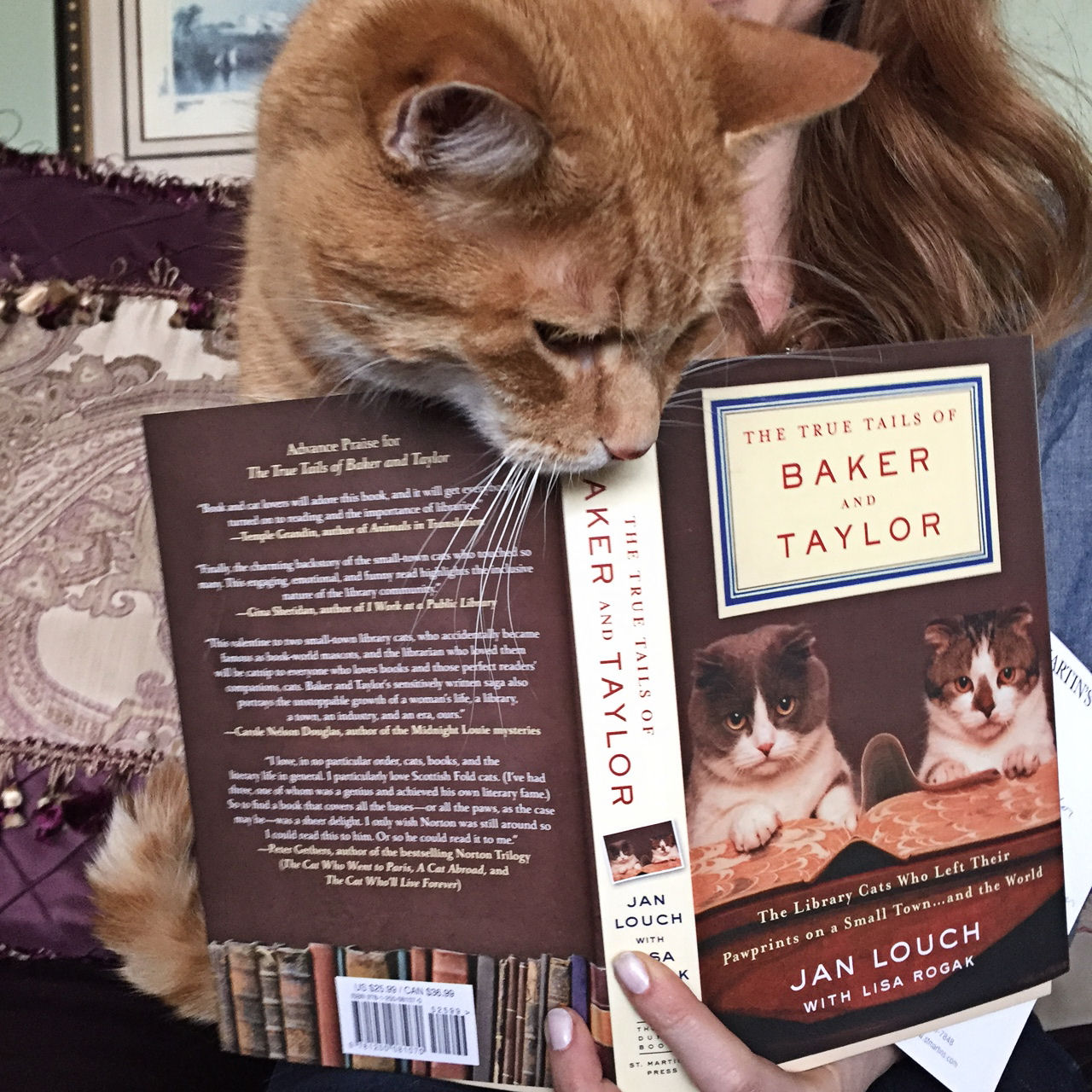
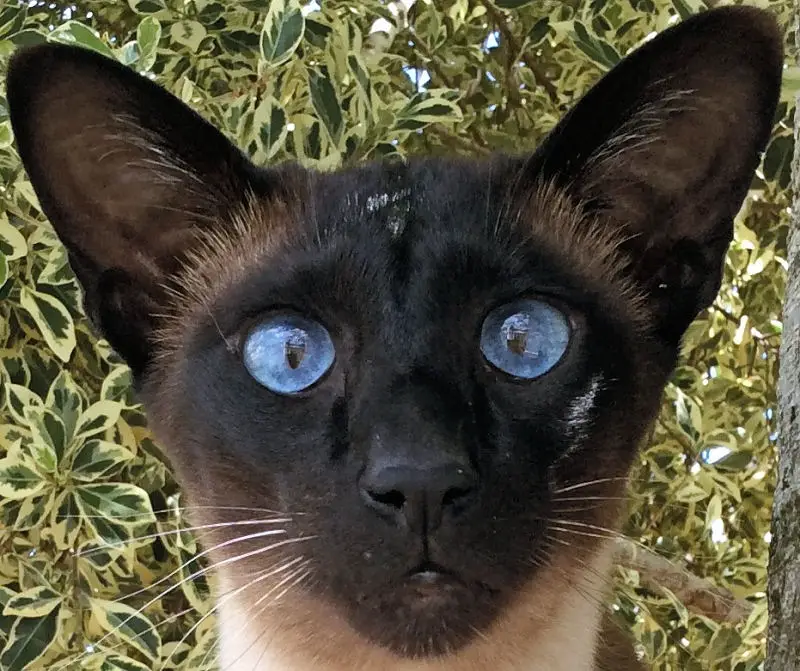


I am unable to find this ramp on any site, has it been discontinued? I have a senior cat with severe hind leg arthritis
who goes outside the litter box because she is unable to climb in to the box. I have soft steps for her to go up to lay on her bed at the foot of my bed. I have tried many things, and feel this would work. Any chance of finding and purchasing 2 of these?